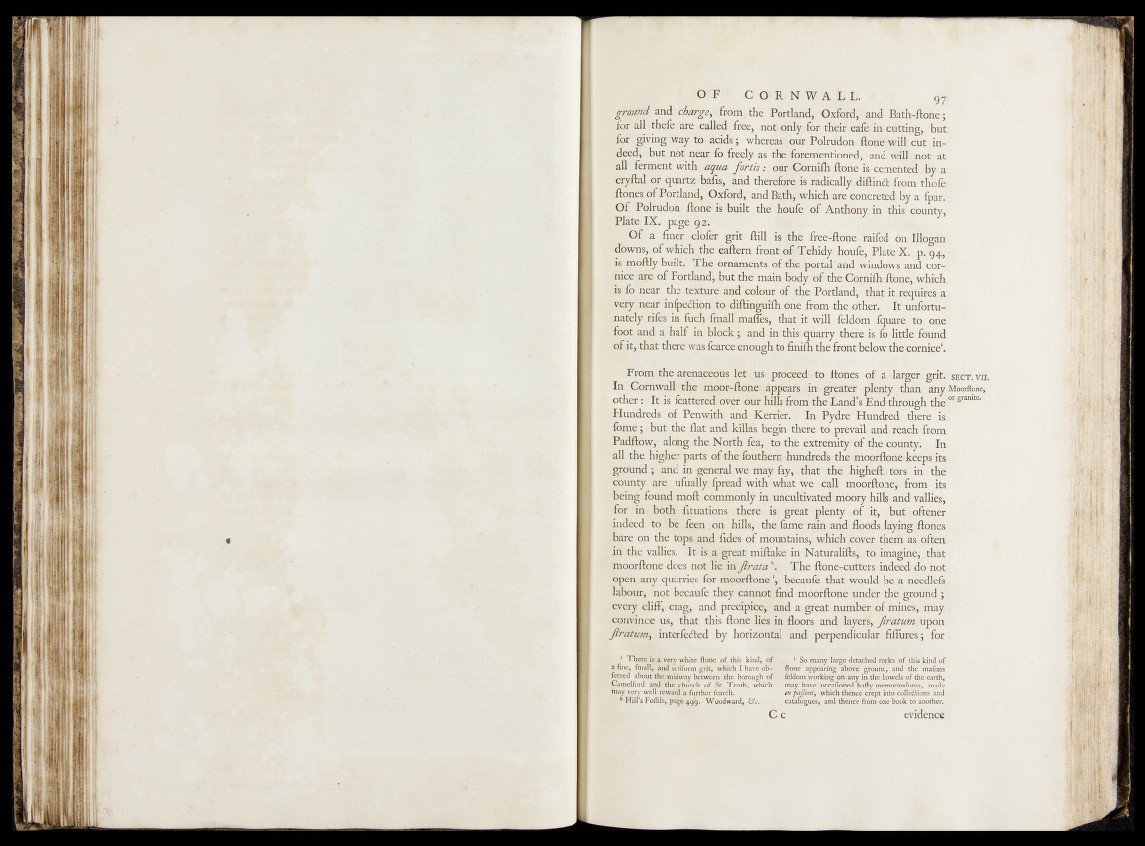
O F • C O R N W A M f i 'M > i M
ground and ehdftge, >Ffo.m thl| Portland,, Oxford,/sand Bath-ftohe;
for Wh tilde We -calkdofifee, not#phlyifop fheifi eiafe,ire,cutting, but
^jof'^ivingiiW^y toi'Acids "p > where^ioW I?olruHon<. done will cut indeed,
but pot near 'fblifeely as tb^^penaentipnfeMj -and;wilh,giot at
all fp^ent with*: aqua ©upli&rniA ftone is.cemeWe3v'by a
*Wyftal. pl'quartzrbafis, and ther©fS|e is” radically, diftin£t -from.'"!1]!©fe
^ftonesJ©%PorHail|i' Oxford, and Bair, which are concreted by! a fpaV*5
O f Pblmdon - ftbhe is built -the^H^fe of Anthony in this county,
Plate IX. jlage 9,2.'
. O f a finenuclofet grit M i i | tfap >fiee-ftbne,
fdbwns, of which the eaftern frond,of-d'ehidy^h'pnfe, iPlatqxfpj'pq,
is Wiqiftly builfc The ornaments, o f the portai and' windows.and ,0®!'-
nice are of Portland, but tha main bodyfbfethaCoriiifh^ftonei, which
is £0 Wear the teit-Ure and colour of the PoBtland/ that, inquires; a
very , near 'infpedtiori ,to diftinguilh one from?the^oth.era i It rinfortu^
»lately fifes in took finallmaffes, thatptVwiff;.®^^
^oof.and-adalf in block; and in this;quarry there is fo,little fa'ufid
of it, that there was fcarce enough to finifti the front below the cornice1.
From'the arenaceous let us, proceed-to ftones .of' Wdarger.graty
In Cornwall1'the moot-ftone appears in greater ;plenty;vthan any
lotheKr’Ienl fcattered'dyer our hills from the Land’s End through thb
. Hundreds of Penwitk and Kerrier. In Pydre' Hundred .therfe \isj
|fbnW; but; the flat and killas begin there to prevail and reach from
I^dftow,y alppgaldie Nprth fea, to the extremity-of^heWpmity.^ In
|W1 the higher parts of the lbuthem hundreds the . moorftone keeps its
ground ; and in genetal.we may fay, .'that the fhigkeflptors-' in,;the
county are ufually fpread with .what we call moorftone* from its;
being found molt commonly in uncultivated! moory hills and vallies,
for in, both, lituations . there .i&r great plenty; o f it, but -oftener
^indeed to be feen ,on hills, the lame rain and floods laying 1 ftones
pWe on the tops and Aides of mountains, which ^coVef theih as’ ofterit
in the vallies. It is a great miftake in Naturalifts,u,t6iim^giney .that
Waoorftone does not lie m ftra ta \ I'-The ftonercuffiers indeed-domot
open any quarries for moorftone *, becaufe that; would be;a rieedlefs
labour, not becaufe .they cannot find moorftone under the? ground j„
every cliff, crag, and precipice, and a great number of mines, mays;
convince us, that this ftone lies in floors and layers, Jiratum, upon
Jiratum^ interfered by horizontal and perpendicular fiflures j for
1 There is a very white ftone of this kind,.,o£ . t 1 So many large detached rocks of this kind of
a fine, fmajj, and uniform grit, which I have ob- ftone1 appearing above ^rbiuld, varid the mafons
ferved about the midway between the^ borough of , feldom, working-on any in the bowels of the earth,
‘ Gamelford and the „ phiirch of St. Teafrh, which/ may* haveoceanoned hafty memorandums, made
may very well reward a further fe&rch. tn paj/ant, which thericefcrept into|;co|l,e^io%v apd,
* Hill’s Foffils, page 49^. Woodward, &V. „ catalogues, and-thence from one book to another,
C c • v evidence
| SECT. VII.
ityloorftone,
or granite.